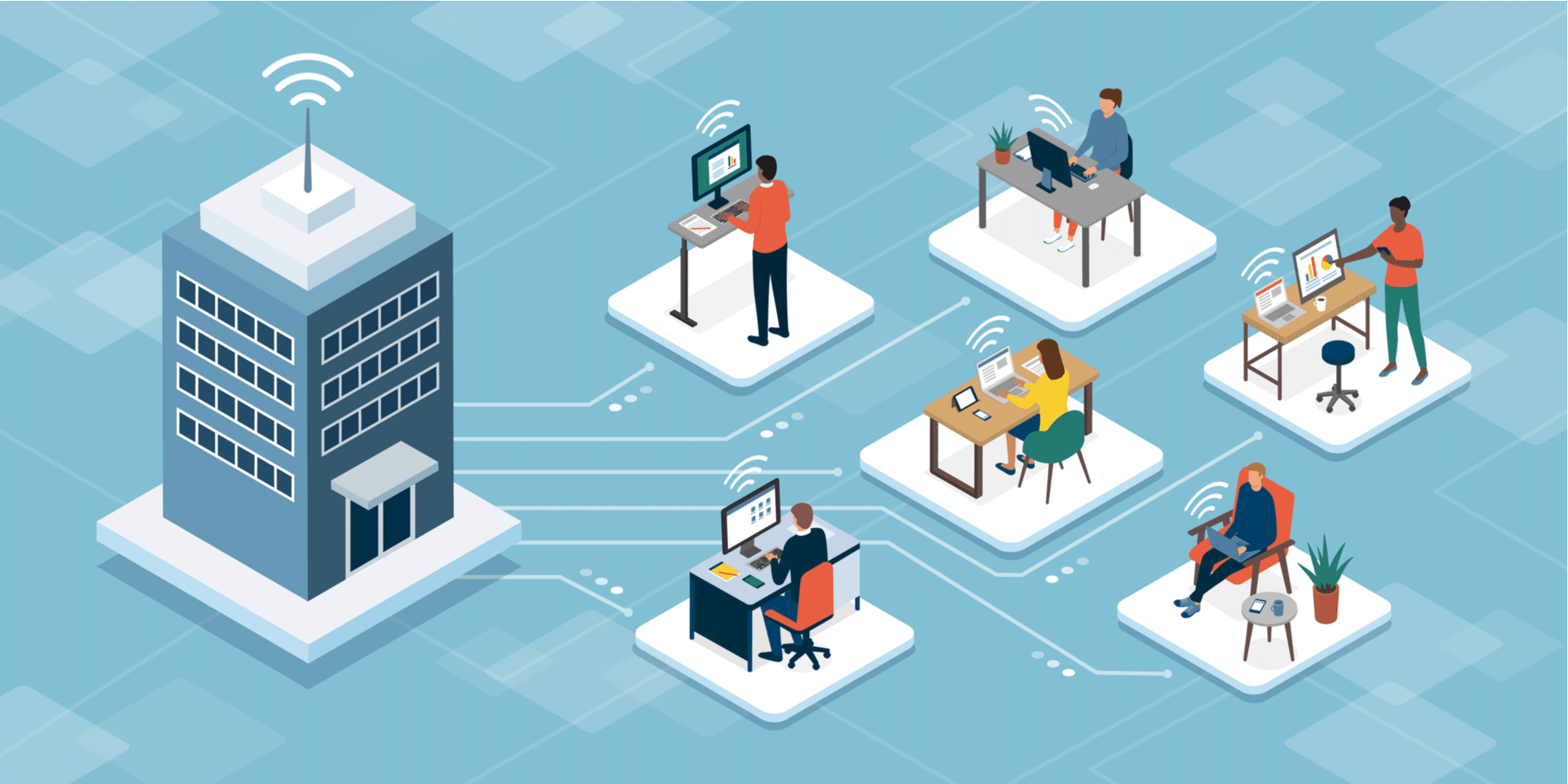Due to the chaos the global pandemic has created over the last two years, the rate of change for both external media and internal company communications has been staggering. It is so challenging for us all to keep up with how these changes impact us as individuals and it is equally challenging for companies to apply these changes and communicate them to their employees.
The need to communicate quickly, with accurate information and updates (as they are happening) is a critical component to core fundamentals of all company operations. According to the corporate communications firm Edelman, 70% of communications executives see investing in communications technology as a top priority for 2022.
The health and well-being of employees is a responsibility shared by various teams within a company, from HR, IT, Operations, Facilities, and Internal Communications. Afterall, the fundamentals of attracting and retaining employees is providing a safe workplace and communications to keep them “in the know” of all the various changes generated by COVID-19.
Thought leaders in corporate communications have offered suggestions for how to embrace new communications trends for 2022. Writing in Forbes magazine, Jaime Hunt, the vice president and chief communications and marketing officer for Miami University of Ohio, has identified three communications strategies for this year.
- Engage Employees
The first is that remote work is here to stay, and organizations need to find new ways to share information and – more importantly – engage employees. She advises employers to think about how hybrid or remote workers can be more informed about your organization. How can you create shared experiences that bring scattered employees together? Also, consider alternatives to top-down communications, and instead, use a multichannel approach that allows employees an opportunity to have a voice. It is better to engage than broadcast, she asserts.
Multi-channel approaches include emails, town hall meetings, department meetings, Zoom
- Use Visual Communications
The second is to use visual communications. According to a 2020 study by Wyzowl (no affiliation to Jaime Hunt), 66% of consumers would prefer to watch short videos to learn about a product or service, compared with 18% who prefer to read a text-based explanation. Videos, graphics, GIFs, infographics, and photos can draw people into your organization’s story. Content should sit at the core of your communications strategy; visual content should consume the bulk of that territory. Jaime Hunt advises that we should not take her word for it. With the abundance of data now available, conduct your own analysis to see how your audience interacts with your messages.
- Agile Communications
The third is agility. If there is one takeaway from the pandemic for Jaime Hunt, it is that flexibility and adaptability are necessary characteristics for people to thrive in a crisis. Be prepared to pivot when you need to. To have a truly agile team, you should be willing to dig into data, perform a thorough analysis and make decisions that are driven by that data. Reflect on what’s working — and what is not — and flex accordingly.
As you consider your internal communications strategies for 2022 and your multi-channel approach, chatbots that answer commonly asked employee questions can also allow you to survey employees and push reminders and important information to the workforce…and they should be incorporated into your solution set.
MeBeBot’s AI Intelligent Assistant offers these features, including Push Messaging and Pulse Surveys. Push Messages are designed to send timely reminders, alerts, or notifications to employees via Teams or Slack. These reminders are ideal for deadlines about open enrollment, performance management, payroll changes, tax deadlines, compliance training, and IT system outages or updates. Push Messaging can also be used to make the workforce aware of strategy changes or important company-wide news and link to knowledge base articles in your company Intranet.
Internal HR, IT, Facilities, Operations and Communications teams can utilize MeBeBot’s Customer Admin Portal to schedule these messages (to be sent at a specific date/time) and choose the recipients to receive them (based on departments, business units, or geographic locations).
Our push messaging feature is easy to use. Click here to see a video of how push messaging works.


According to Beth White, MeBeBot CEO, “Employees are overwhelmed with emails and important messages are missed. Our customers were looking for new ways to reach their employees, outside of email. With Push Messaging, proactive reminders for deadlines, company announcements, updates on COVID-19 related mask and vaccine mandate changes, and business facilities can be sent out to targeted groups within collaboration tools, like Teams and Slack.”
Pulse Surveys is another feature of MeBeBot’s Intelligent Assistant, that operates like Push Messaging (sent via Teams or Slack), to gather immediate feedback from employees on various “of the moment” topics (such as return to workplace, health & safety, and benefits). This feature allows for communications to become a “two-way street,” providing companies actionable feedback instantly.
To learn more about Pulse Surveys, please see our blog here.
Contact us for more information or to see a demo.
MeBeBot’s Intelligent Assistant seamlessly installs as an app in Teams, Slack, or web portals to provide employees with instant automated answers to global HR, IT, and Ops FAQS. MeBeBot provides real-time usage Dashboards, Push Messaging, and custom Pulse Surveys, generating instant employee feedback on of-the-moment questions. MeBeBot’s “one-stop bot” is trusted by leading organizations to elevate the employee experience so work can be more meaningful and valuable.
Visit our website at https://mebebot.com.

